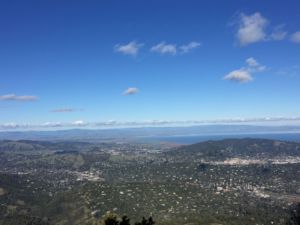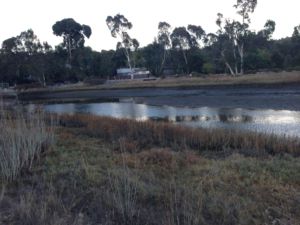Every morning, many residents of Marin County wake up to a view of Mt. Tam, or the San Francisco Bay, or the rolling hills of west Marin peppered with evergreen trees stretching all the way to the sparkling ocean. One thing that many residents pride themselves on is their ability and willingness to protect the county they call home and all the natural beauty that lies within it. But behind the luscious landscape and beautiful backdrops, is Marin as green as everyone believes it to be?
Susan Rusche, President of the Environmental Forum of Marin, explained that even though residents of Marin may feel they are environmentally conscientious, there are problems lurking beneath the surface.
“Marin has one of the largest environmental footprints of any county, even though everybody in Marin seems to think they’re environmentalists,” Rusche said. “It is largely because of our affluence that we basically use up a lot of resources.”

According to Rusche, because the citizens have more at their disposal, they are able to consume more, leading to a detrimental effect on the ecosystem.
“You’ve got so many people who are out taking flights, and airplanes use a tremendous amount of fuel,” Rusche said. “You can purchase travel offsets, which help mitigate some of the problems associated with airline travel.”
Rusche also stressed the importance of electronic alternatives, such as electric appliances and cars.
“You can reduce fossil fuels by switching to electric appliances,” Rusche said. “We also encourage that your next car be electric or at least a hybrid.”
Fortunately, there are plenty of people and organizations in Marin doing all they can to spread the word throughout the county. One such example is Marin Clean Energy (MCE), which is involved in supporting the environment by providing sustainable and renewable energy.
Alex DiGiorgio, the Deputy Director of Community Development at MCE, shared all that they are doing to promote environmental wellness, describing how they are a ‘community choice aggregator.’ This allows customers to decide what energy options they want.
“We like to call it energy democracy,” DiGiorgio said. “People can vote for the type of energy resources they wish to purchase.”

MCE serves many customers in Marin, as well as Contra Costa, Napa and Benicia. DiGiorgio pointed out that people in Marin are very lucky, not just because of the beauty of their home but also because of their opportunities to support it.
“[Customers in Marin] have options that don’t exist in many other parts of California right now, like alternative options for the source of energy,” DiGiorgio said. “The state of the environment is such that people can take immediate action to address climate change.”
Another group, which has been around for over 45 years, is the aforementioned Environmental Forum of Marin. According to their website, the Forum “provides community-building, environmental programs to inspire and advance effective advocacy for the natural world.”
Though Rusche believes Marin residents are trying to maintain their county, she doesn’t think they take full advantage of all their opportunities to do so.
“There’s a lot more we could be doing,” Rusche said. “One advancement is Project Drawdown. It has basically 100 different things that people can do to ‘drawdown’ climate change.”
Though Marin may not be at its peak environmental efficiency yet, Rusche is still optimistic. She says that the Forum has gotten all of its energy customers to switch to 100 percent renewable energy, a step she considers key in the fight against climate change. Because of those successes, the Forum has reduced annual greenhouse gas emissions by over nine million pounds, equivalent to taking 877 cars off the road per year.
DiGiorgio says MCE is also looking to implement programs in Marin that will help push the frontier of environmental work by creating new ways to save energy.
“The frontier is going to be developing more renewable energy projects and it will really be providing innovative programs and policies,” DiGiorgio said. “That would be energy efficiency programs, electric vehicle programs, battery storage programs, etc…”
DiGiorgio also feels that MCE can have a profound impact on the people and places around it.
“MCE can advance innovative policy to catalyze more innovative sustainable elements,” DiGiorgio said. “And the Bay Area is definitely at the front of that trend.”

Though DiGiorgio is very keen on the Bay Area as a whole, one must wonder: how is Redwood faring? Joe Stewart, a Sustainable Agriculture and AP Environmental Science teacher, thinks that while some students are embracing the movement, others can do more.
“There are clubs that work towards environmental improvement. Lots of students get involved in cleanup things, like habitat restoration events,” Stewart said. “However we’ve been trying for the last few years to put composting in the CEA, and our biggest challenge has been that students contaminate the various bins and then we have to throw everything away.”
Stewart feels that Redwood is ready to institute programs to help reduce waste, but that absolutely everybody needs to be on board in order for it all to work.
“It ultimately comes down to the students,” Stewart said. “We have the resources and adults to institute a composting or waste reduction system, but unfortunately there are enough students that don’t care or don’t pay attention.”
Stewart feels similar to Rusche in the sense that there is noticeable progress, but also more work to be done.
“There’s a lot of awareness and a lot being done, but we could improve,” Stewart said.











